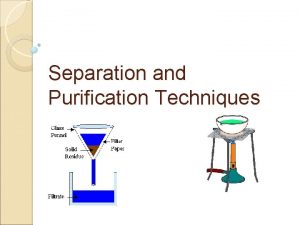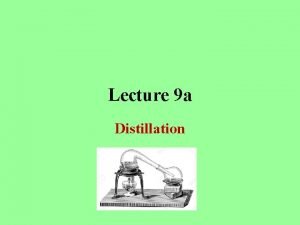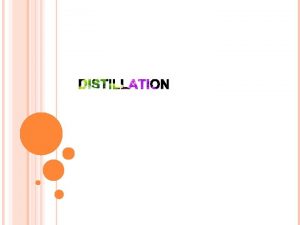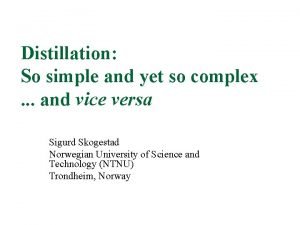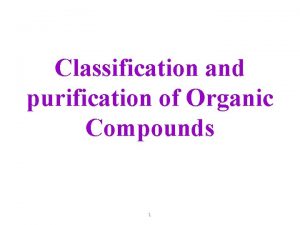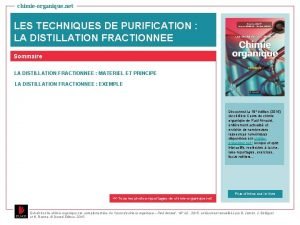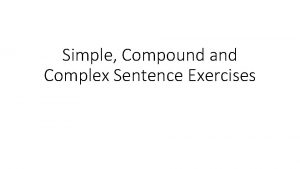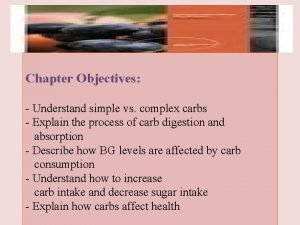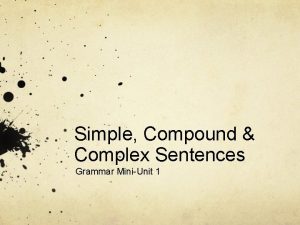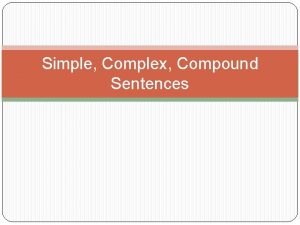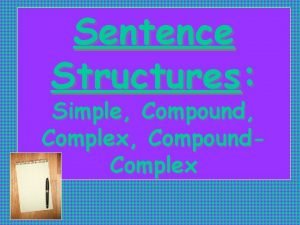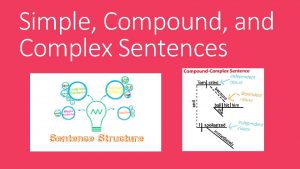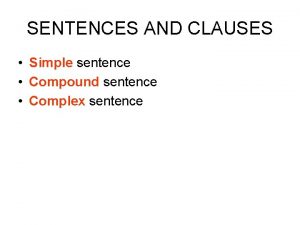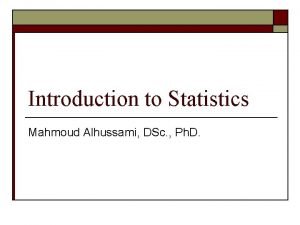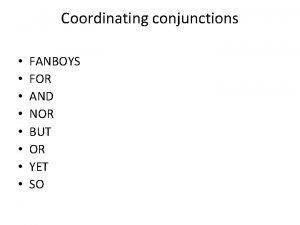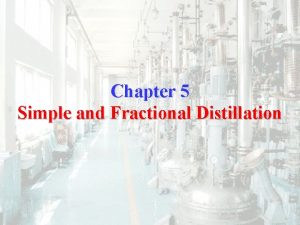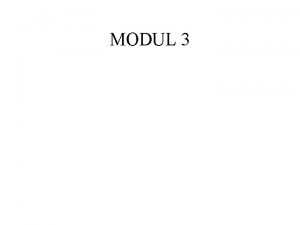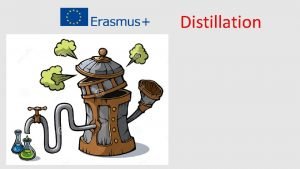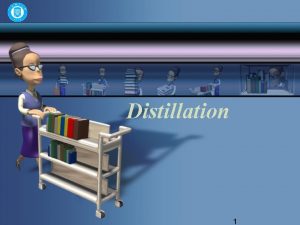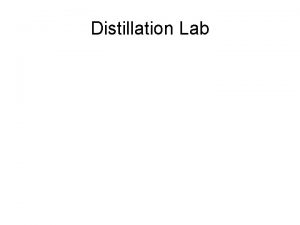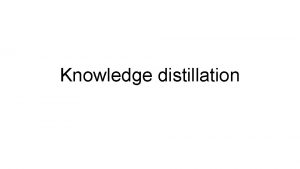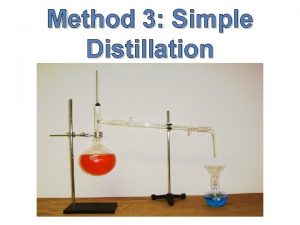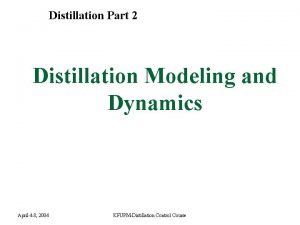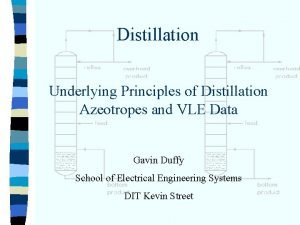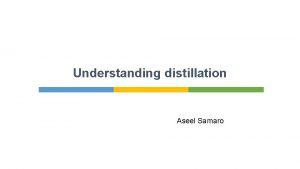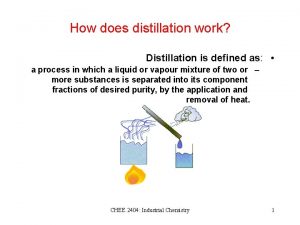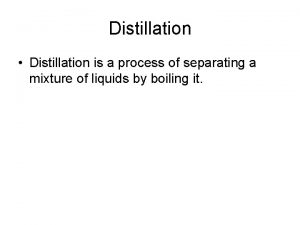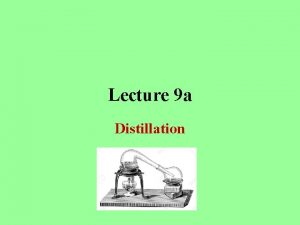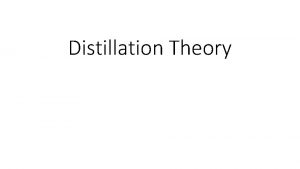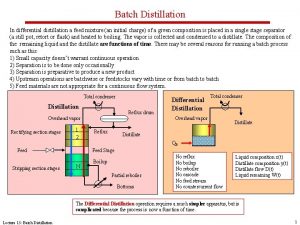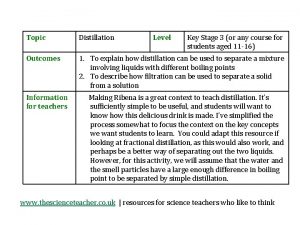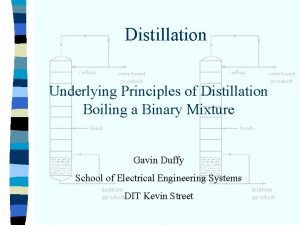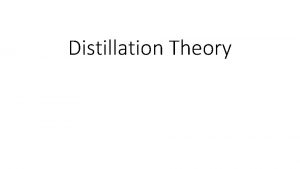Distillation So simple and yet so complex and


















































- Slides: 50

Distillation: So simple and yet so complex. . . and vice versa Sigurd Skogestad Norwegian University of Science and Technology (NTNU) Trondheim, Norway

Outline n n n When use distillation Increase in heat input decreases temperature? ? Complex model but simple dynamics. . . . usually Control: Get rid of some myths! Complex column configurations (Petlyuk/Kaibel). . . save energy as well as capital

BASF Aktiengesellschaft

L F V B D

Alternative: Packed column

When use distillation? n n Liquid mixtures with difference in boiling point Unbeatable for high-purity separations because n Essentially same energy usage independent of (im)purity! § n Number of stages increases only as log of impurity! § § n Going from 1% to 0. 0001% (1 ppm) impurity in one product increases required number of stages by factor 3 log(1. e-6)/log(1. e-2)=3 Well suited for scale-up § n Going from 1% to 0. 0001% (1 ppm) impurity in one product increases energy usage only by about 1% Columns with diameters over 15 m Examples of unlikely uses of distillation: § § High-purity silicon for computers (via Si. Cl 3 distillation) Water – heavy-water separation (boiling point difference only 1. 4 C)

Reflux gives strange effects

Reflux gives strange effects • INCREASED HEAT INPUT • ) LOWER TEMPERATURE TOP SO SIMPLE. . and yet SO COMPLEX

Simple to model The equilibrium stage concept Vi+1 yi+1 Stage i+1 Vi yi Li+1 Xi+1 Equilibrium (VLE): yi = Ki(xi) Stage i Vi-1 yi-1 Material balance stage i (Acc=in-out): dni/dt = Li+1 xi+1 + Vy-1 yi-1 –Li xi – Vi yi Li xi Stage i-1 The equlibrium stage concept is used for both tray and packed columns • N = no. of equilibrium stages in column Typical: 0. 7 • Tray column: N = No. trays * Tray-efficiency Typical: 0. 5 m • Packed columns: N = Height [m] / HETP [m]

Model stage i Usually most important!

Simple to model. . . yet difficult to understand n SIMPLE TO MODEL q q n 1920’s: Models known. Graphical solution (Mc. Cabe-Thiele) 1960’s: Simulation with computer straightforward No need for more work!? BEHAVIOR NOT SO SIMPLE TO UNDERSTAND q Mathematician: n n n q Simulation and experience n n q Large number of coupled equations Nonlinear equations (mainly VLE) Complex behavior expected Not so complex Dynamic response: simple More simulations: Maybe not so simple after all n n Instability Multiple steady states

Dynamic behavior simple! n Example: Composition response of propanepropylene splitter with 110 stages and large reflux

Propane-propylene with 110 stages. Increase reflux. Simulated composition response with detailed model. Xfeed stage XD Observed: “Simple” first-order responses with time constant about 6 h = 400 min XB 2000 min

Increase in reflux. Mole fraction propylene on all stages feed stage All stages have a very similar slow first-order response! Behaves like “a single mixing tank” Why? Reflux gives strong interactions between the stages SO COMPLEX (model). . . and yet SO SIMPLE (response)

Dynamic behavior simple? n 1970’s and 1980’s: Mathematical proofs that dynamics are always stable q n In reality, independent variables are q q n Based on analyzing dynamic model with L and V [mol/s] as independent variables Lw [kg/s] = L [mol/s] ¢ M [kg/mol] QB [J/s] = V [mol/s] ¢ Hvap [J/mol] Does it make a difference? YES, in some cases!

Molar and mass reflux t=0: z. F is decreased from 0. 5 to 0. 495. Lw[kg/s]= L[mol/s]/M where M [kg/mol] is the molecular weight, Data: ML=35, MH=40. What is happening? Mole wt. depends on composition: more heavy ! M up ! L down ! even more heavy. . . ) Can even get instability! With MH=40, instability occurs for ML<28 (Jacobsen and Skogestad, 1991)

Instability for “ideal” columns: Many people didn’t believe us when we first presented it in 1991! Likely to happen if the mole weights are sufficiently different

II Reflux III I IV IV Reflux back again. . but not composition !? Top composition II I SO SIMPLE. . and yet SO COMPLEX

Multiple steady state IV III solutions V II I

IV III V II I

V IV I

Actually not much of a problem with control! This is why you are not likely to notice it in practice. . . unless you look carefully at the reflux. . will observe inverse response in an unstable operating point (V) SO COMPLEX (no control). . and yet SO SIMPLE (control) IV V I


Myth of slow control n n Let us get rid of it!!! Compare manual (“perfect operator”) and automatic control for typical column: n n n q q 40 stages, Binary mixture with 99% purity both ends, relative volatility = 1. 5 First “one-point” control: Control of top composition only Then “two-point” control: Control of both compositions

Myth about slow control One-point control Want x. D constant Can adjust reflux L Disturbance in V “Perfect operator”: Steps L directly to correct steady-state value (from 2. 70 to 2. 74)

Myth about slow control One-point control CC x. DS Disturbance in V “Perfect operator”: Steps L directly Feedback control: Simple PI control Which response is best?

Myth about slow control One-point control SO SIMILAR (inputs). . . and yet SO DIFFERENT (outputs)

Myth about slow control Two-point control CC CC x. DS: step up x. BS: constant “Perfect operator”: Steps L and V directly Feedback control: 2 PI controllers Which response is best?

Myth about slow control Two-point control SO SIMILAR (inputs). . . and yet SO DIFFERENT (outputs)

Myth about slow control Conclusion: n Experience operator: Fast control impossible q n BUT, with feedback control the response can be fast! q q n “takes hours or days before the columns settles” Feedback changes the dynamics (eigenvalues) Requires continuous “active” control Most columns have a single slow mode (without control) q Sufficient to close a single loop (typical on temperature) to change the dynamics for the entire column

Complex columns n Sequence of columns for multicomponent separation Heat integration Pressure levels Integrated solutions Non-ideal mixtures (azeotropes) n Here: Will consider “Petlyuk” columns n n

Typical sequence: “Direct split” A B C A, B, C, D, E, F D E F

3 -product mixture A A+B A+B+C B+C B C A+B+C B B+C C 1. Direct split 2. Indirect split 3. Combined (with prefractionator) C

Towards the Petlyuk column A A A+B+C B+C C 3. A+B A+B A B B+C C 4. Prefractionator + sidestream column liquid split vapor split C 5. Petlyuk 30 -40% less energy

Implementation of Petlyuk in single shell A A A+B+C B B (pure!) thermodynamically equivalent (both about 40% savings in energy) SO COMPLEX. . and yet SO SIMPLE B+C C 5. PREFACTIONATOR IMPLEMENTATION “Thermally coupled” with single reboiler and single condenser C 6. DIVIDED-WALL IMPLEMENTATION in single shell! Gives about 40% savings also in capital

GC – Chemicals Research and Engineering Dividing Wall Columns Off-center Position of the Dividing Wall ≈ Montz

Vmin-diagram for Different Distillation Arrangements PB/C Vmin (Petlyuk + ISF/ISB) PA/B VT/F Vmin(B(C) Vmin(A/B) C 21 C 1 PA/C C 21 Vmin(C 1) = DC 1/F SO COMPLEX. . and yet SO SIMPLE (to estimate enrgy)

Divided wall columns: starting to catch on n n 1940’s: first patent 1960’s: Thermodynamic analysis (Petlyuk) 1984: First implementation (BASF) 2005: BASF has about 50 divided wall columns q n also in Japan, South Africa. . . Control issues still not quite solved q but I think it should be rather easy

4 -product mixture Conventional sequence with 3 columns A A – i. C 5 B – n. C 5 C – i. C 6 D – n. C 6 B C A, B, C, D D Direct optimal extension of Petlyuk ideas requires two divided walls. Will look for something simpler

4 -product mixture: Kaibel column. A A A+B B (pure!) B ABCD A – i. C 5 B – n. C 5 C – i. C 6 D – n. C 6 ABCD C C (pure!) C+D D Alternative 3 -column sequence D Kaibel: 1 column!! More then 50% capital savings Also saves energy (but maybe not exergy)

Control of Kaibel column Close a “stabilizing” temperature (profile) loop for each split • Prefractionator: • Close 1 “stabilizing” temperature loop • Main column • Close 3 “stabilizing” temperature loops SO COMPLEX. . and yet SO SIMPLE (to operate) D

D S 1 H=6 m D=5 cm F S 2 B

Conclusion n n Distillation is important Distillation is unbeatable (in some cases) Distillation is fun Distillation is complex yet simple. . . and vice versa

n n n n column, uses, when use? strange responses. . . increase heat. . T drops model complex: would expect complicated behavior. . . yet simple: show typical response e. g all stages response simple: expect always stable. . . yet complex: can be unstable with mss (Lw V) NEW column configurations. . . “easy first” Petlyuk. Kaibel. make drawing of how it evolves Better. heat-integrated Petlyuk (prefrac). Hidic item BATCH DISTILLATION (Reflux) item MODEL, DYNAMICS (Feedback) item CONTROL (Steady-state misleading) item MULTIPLE STEADY STATES AND INSTABILITY (Nonlinearity and feedback) item INTERLINKED COLUMNS (Parallel paths) item BATCH DISTILLATION AGAIN item SYSTEMS VIEW item CONCLUSION

The response is nonlinear. .

The response is nonlinear. . but this can be corrected by taking log x. D SO SIMPLE. . and yet SO COMPLEX XD = ln(x. DL/x. DH)

Distillation control Two-point LV LV CC Ts TC x. B CC x. D

Refinery Main Fractionator

Can make problems. . . Detuned controller gain V V

Multi-Effect Prefractionator Additional large energy savings
 Simple distillation boiling point difference
Simple distillation boiling point difference Introduction distillation
Introduction distillation Molecular distillation principle
Molecular distillation principle So simple yet so complex
So simple yet so complex Simple compound complex and compound-complex sentences quiz
Simple compound complex and compound-complex sentences quiz Simple and compound sentences quiz
Simple and compound sentences quiz Ghon complex and ranke complex
Ghon complex and ranke complex The electra complex
The electra complex Difference between oedipus complex and electra complex
Difference between oedipus complex and electra complex Difference between oedipus complex and electra complex
Difference between oedipus complex and electra complex Present perfect just already yet
Present perfect just already yet Discussion discussion
Discussion discussion Theory of distillation
Theory of distillation Thin layer chromatography principle
Thin layer chromatography principle Distillation fractionnée exemple
Distillation fractionnée exemple Simple distillation diagram
Simple distillation diagram Simple present simple past and simple future
Simple present simple past and simple future Simple and compound and complex sentences
Simple and compound and complex sentences Compound complex sentence exercises
Compound complex sentence exercises Present simple past simple future simple
Present simple past simple future simple Simple past simple present simple future
Simple past simple present simple future Past continuous present simple
Past continuous present simple Past simple future
Past simple future Present continuous vs future simple exercises
Present continuous vs future simple exercises Simple present past future tense
Simple present past future tense Definition present simple
Definition present simple Future simple present simple
Future simple present simple Simple compound complex rules
Simple compound complex rules Simple compound and complex sentences
Simple compound and complex sentences Compound and complex sentence
Compound and complex sentence Simple vs complex carbohydrate
Simple vs complex carbohydrate Simple view and complex view
Simple view and complex view Simple view and complex view
Simple view and complex view Simple view and complex view
Simple view and complex view How animal cells use nutrients
How animal cells use nutrients Direct vs indirect question
Direct vs indirect question Use jeopardy in a sentence
Use jeopardy in a sentence Simple compound and complex sentences mcq
Simple compound and complex sentences mcq Example of simple complex and compound sentences
Example of simple complex and compound sentences Example of simple complex and compound sentences
Example of simple complex and compound sentences Simple compound and complex sentences tricks
Simple compound and complex sentences tricks Compound-complex sentence examples
Compound-complex sentence examples Rules for complex sentences
Rules for complex sentences Simple sentences examples
Simple sentences examples Simple compound and complex sentences
Simple compound and complex sentences Simple and complex hypothesis
Simple and complex hypothesis Introduction to morphology and syntax
Introduction to morphology and syntax Present perfect continuous tense negative rule
Present perfect continuous tense negative rule What are cause and effect connectives
What are cause and effect connectives Subordinating conjunctions fanboys
Subordinating conjunctions fanboys Present perfect never ever already and yet
Present perfect never ever already and yet
